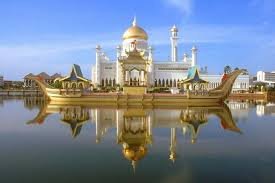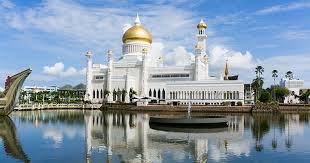The World’s Largest Palace: Bucharest’s Palace of the Parliament
In the realm of architectural marvels and historical landmarks, palaces stand as grand testaments to cultural heritage and opulence. As of 2024, the Palace of the Parliament in Bucharest, Romania, retains its title as the largest palace in the world. This article explores the impressive dimensions and rich history of this monumental building, along with its significance in contemporary times.
Palace of the Parliament: Architectural Grandeur Bucharest’s Palace of the Parliament, the largest palace globally, is an architectural marvel. It spans 330,000 square meters and stands 84 meters high, with a volume of 2,550,000 cubic meters. Constructed over 13 years from 1984 to 1997 under Nicolae Ceaușescu’s regime, it embodies Romania’s political and historical narrative. The palace houses 1,100 rooms, including a nuclear bunker, and serves as the seat of the Romanian Parliament.
Economic and Cultural Significance The Palace of the Parliament is valued at €4 billion as of 2020, making it the world’s most expensive administrative building. Despite its size, about 70% of the palace remains unused. It features 23 sections with ornate interiors, museums, and an international conference center, highlighting its cultural significance. The palace not only serves a political function but also attracts tourists, contributing to Romania’s economy and global cultural presence.
Top-10 Largest Palaces in the World Following Bucharest’s Palace of the Parliament, other notable large palaces include the Hofburg Palace in Vienna, the Louvre Palace in Paris, Ak Saray in Ankara, and Rashtrapati Bhavan in New Delhi. These palaces vary in their historical and cultural contexts but all share immense floor spaces and historical importance.

Why This News is Important
Significance for Government Exam Aspirants For students preparing for government exams, understanding significant global landmarks like the Palace of the Parliament is crucial. This knowledge is often part of general awareness sections in exams such as IAS, PCS, and other competitive exams. Familiarity with such topics can help aspirants score better in the general knowledge and current affairs sections.
Cultural and Historical Awareness Knowing about the world’s largest palace enhances cultural and historical awareness. It provides insights into Romania’s history, architectural advancements, and the political landscape during Ceaușescu’s regime. This context is valuable for exams focusing on world history, cultural studies, and architecture.
Economic and Political Relevance The Palace of the Parliament’s economic value and political significance are relevant for understanding global economics and governance structures. Exam questions often encompass such topics to test candidates’ comprehension of international affairs and economic history.
Historical Context:
Construction and Political Background The Palace of the Parliament’s construction began in 1984 and took 13 years to complete, driven by Nicolae Ceaușescu’s vision of a grandiose political symbol. It represents the extravagant ambitions of Ceaușescu’s regime, which ultimately led to economic strain and his downfall during the Romanian Revolution of 1989.
Post-Revolution Use and Cultural Transformation Post-1989, the palace transitioned from a symbol of dictatorial excess to a multifunctional space for Romania’s democratic governance. It now houses the Romanian Parliament, museums, and an international conference center, reflecting Romania’s shift towards democracy and cultural preservation.
Key Takeaways from “The World’s Largest Palace”
| S. No. | Key Takeaway |
|---|---|
| 1. | Bucharest’s Palace of the Parliament is the largest palace in the world, spanning 330,000 square meters. |
| 2. | The palace was constructed over 13 years (1984-1997) under Nicolae Ceaușescu’s regime. |
| 3. | It houses 1,100 rooms, including a nuclear bunker, and serves as the seat of the Romanian Parliament. |
| 4. | The palace is valued at €4 billion, making it the most expensive administrative building globally. |
| 5. | Despite its size, approximately 70% of the palace remains unused, highlighting its potential for further utilization. |
Important FAQs for Students from this News
Q1: What is the Istana Nurul Iman?
A1: Istana Nurul Iman is the official residence of the Sultan of Brunei and is recognized as the largest palace in the world.
Q2: Where is Istana Nurul Iman located?
A2: It is located in Bandar Seri Begawan, the capital city of Brunei.
Q3: Who designed Istana Nurul Iman?
A3: The palace was designed by Filipino architect Leandro V. Locsin.
Q4: How many rooms and bathrooms does Istana Nurul Iman have?
A4: The palace boasts 1,788 rooms and 257 bathrooms.
Q5: What is the significance of Istana Nurul Iman during Hari Raya Aidilfitri?
A5: During Hari Raya Aidilfitri, the Sultan opens the palace to the public, allowing citizens and visitors to experience its splendor, fostering unity and cultural pride.
Some Important Current Affairs Links

















